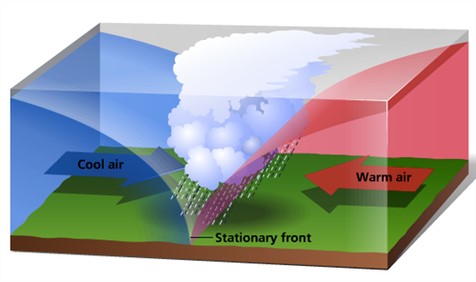
:max_bytes(150000):strip_icc()/Stationary_front_symbol2222-748aa6ffd6744d629a468adc635dc98c.jpg)
The two masses must move in a face-to-face direction or converge.In such conditions, the cold and denser air mass being heavier invades the area of the warm and light Air mass.Two opposing air masses must have contrasting temperatures that are one air mass should be called dry and heavier while the other should be hot humid and light.The presence of two opposing air masses having contrasting properties of air temperature, air pressure, density, and humidity is important.Mid-latitude cyclones or temperate cyclones or extra-tropical cyclones also occur due to frontogenesis. In the northern hemisphere, frontogenesis happens in an anti-clockwise direction, and the southern hemisphere in the clockwise direction due to the Coriolis effect. The process of destruction or dying or dissolution of the front is called frontolysis. The process associated with the creation of a new front is called frontogenesis. It is also a zone of intensification of low pressure, cooling of rising hot and humid air, condensation, cloud formation, and precipitation They are characterized through common characteristics such as large differences in air temperature across the convergence zone and bending isobars. The frontal zone is inclined at a low angle to the Earth’s surface.

It is an inclined zone along which two opposing air masses having contrasting characteristics in terms of air temperature humidity density pressure converged together.Īn extensive transitional zone between two converging air masses is called a frontal zone.


 0 kommentar(er)
0 kommentar(er)
